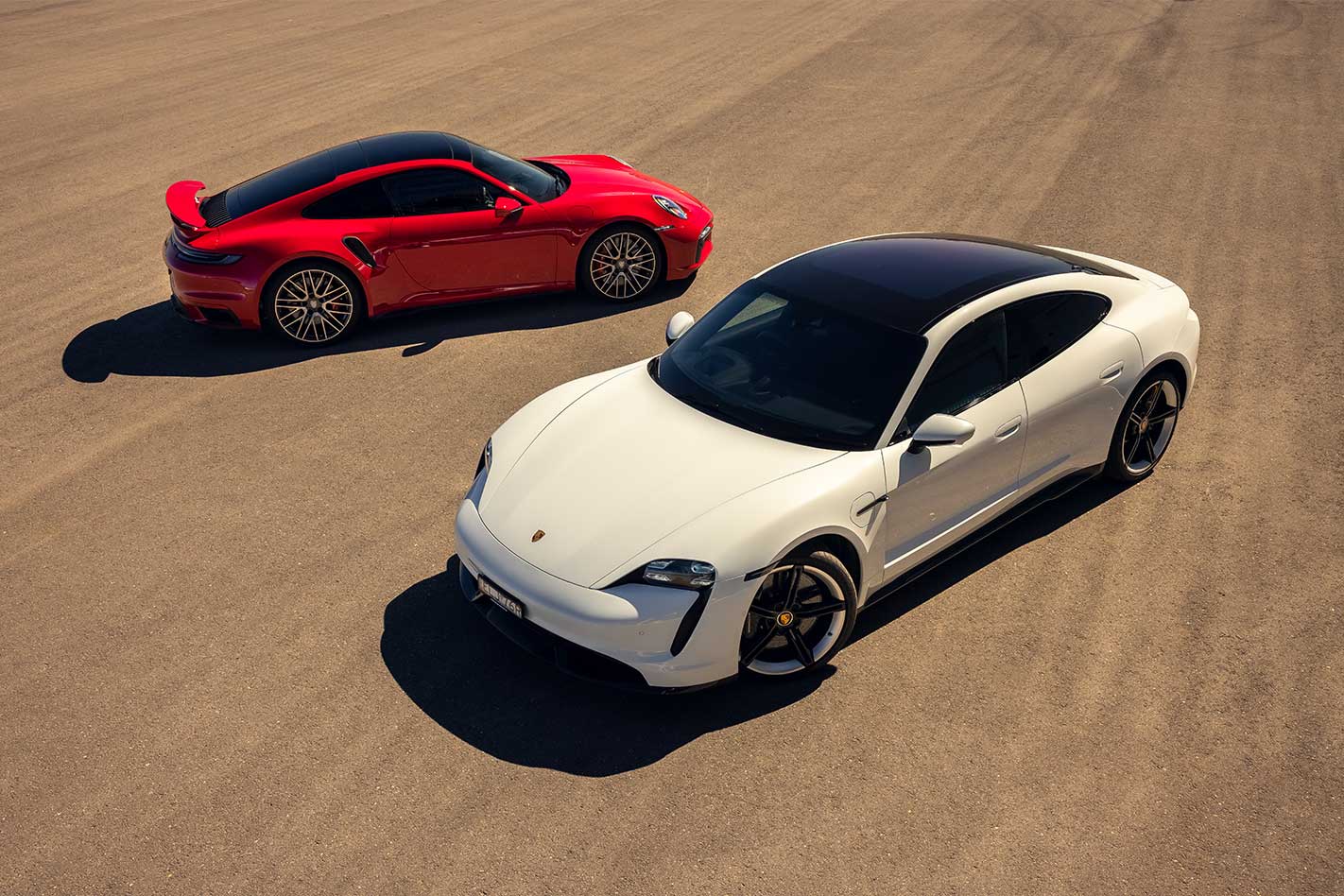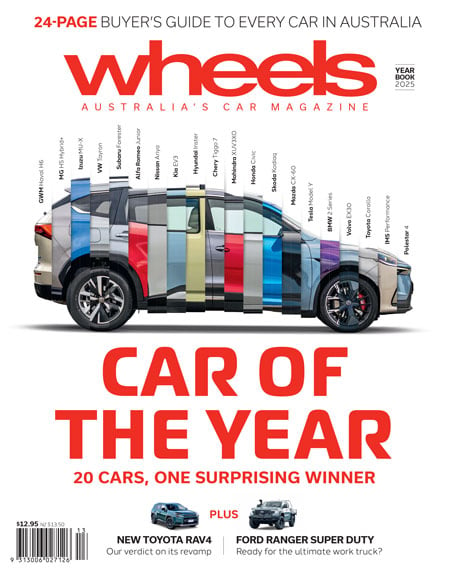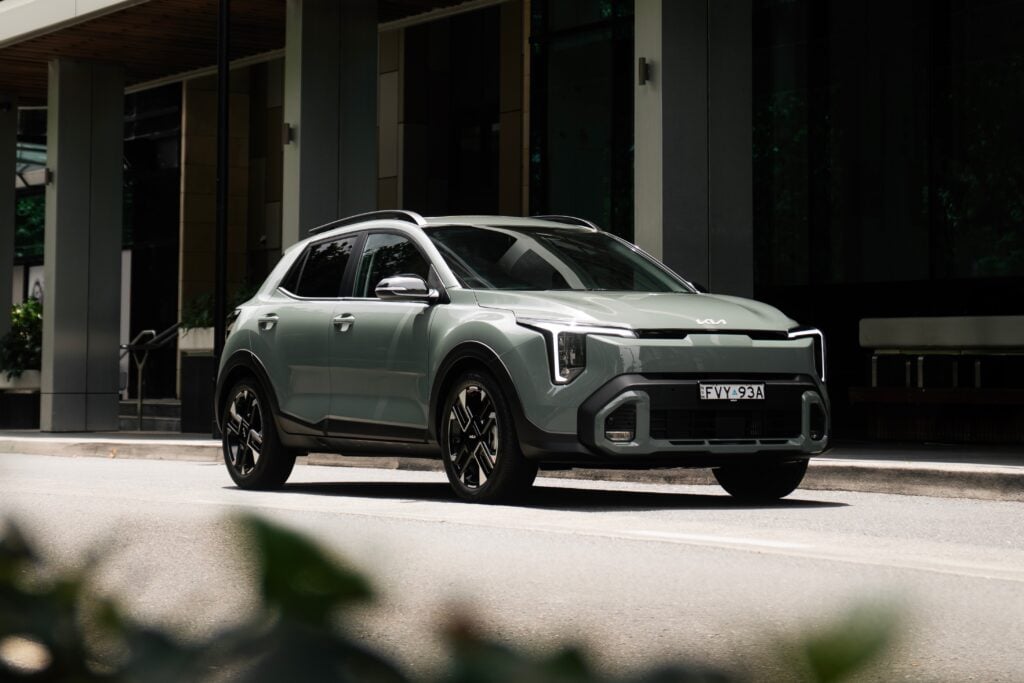It’s easy to see how this could be confusing. Here we have two Porsche Turbos and while there are indeed two individual turbochargers present, they’re both installed in the one car, compressing the air before it is fed into the 911 Turbo’s 3.8-litre flat-six.
The Porsche Taycan Turbo S doesn’t have any turbos because it doesn’t have an engine. The only air it compresses is via the bellows in its adaptive air suspension.
Porsche’s decision to apply the naming convention of its internal combustion engine (ICE) models to its battery electric vehicles (BEV) led to plenty of gnashed teeth in certain sectors, but it is a very logical decision.
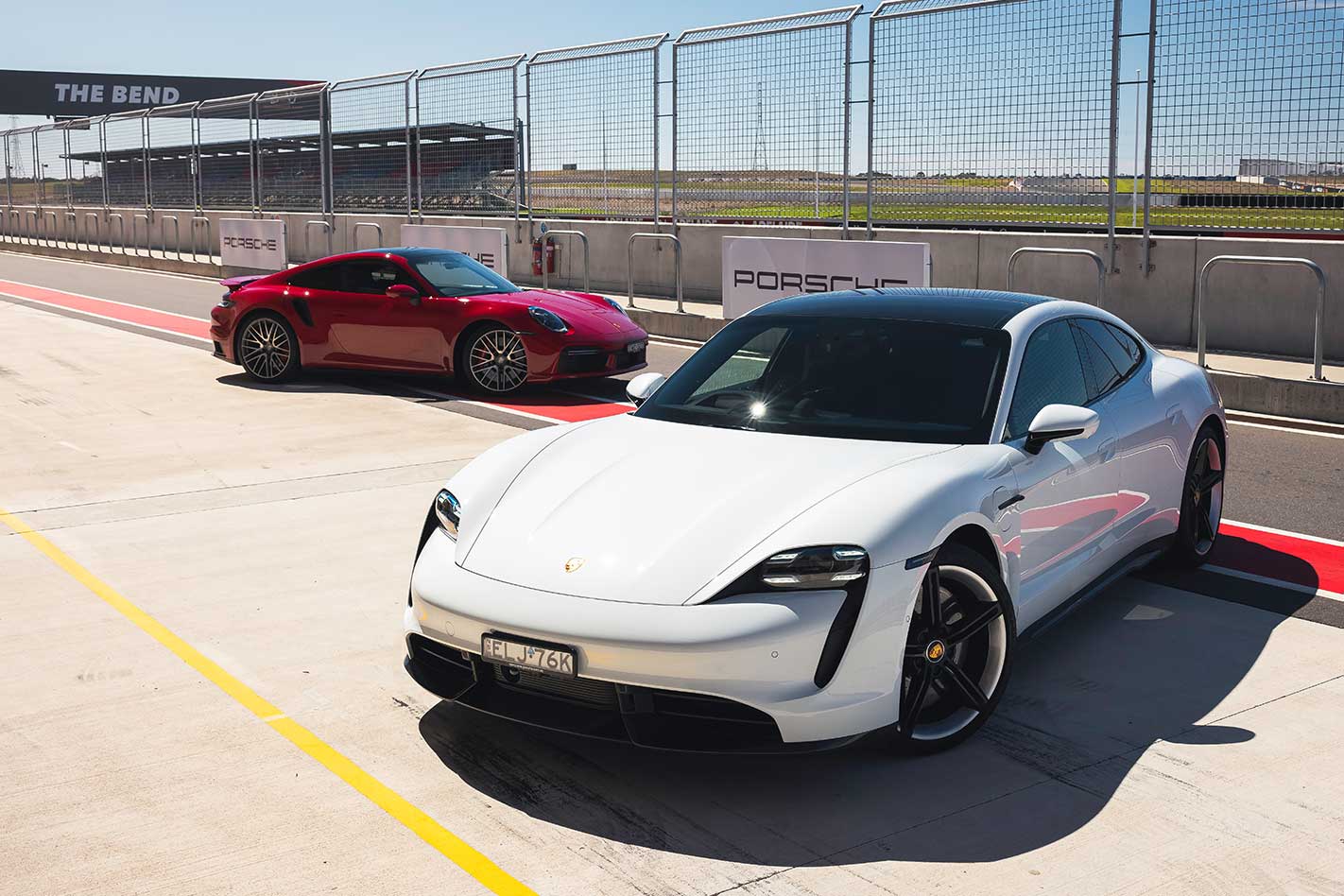
You might be curious as to why we have one Turbo (the 911) and one Turbo S (the Taycan). It’s simply a case of using the most closely aligned models in the respective ranges, separated by around $60,000 but, more importantly, just 16kW/tonne. This isn’t intended to be a straight comparison, though.
Comparing a 911 with a Taycan would be like comparing a Mercedes-AMG GT R with a GT63, but whereas the Mercs at least use the same engine, the Porsches could scarcely be more different in their propulsion systems.
Instead it’s an unique opportunity to take two very high performing cars, one the epitome of past/current technology and the other the benchmark in future performance, and drive them back-to-back to discover how each generates its performance and behaves at the limit. This seems an apposite moment to compare the specifications of the two vehicles.

Its outputs of 427kW at 6500rpm and 750Nm from 2250-4500rpm match those of the previous generation (991.2) Turbo S, the extra grunt liberated by a new intake system and new turbochargers.
They are larger, the compressor wheels now 3mm bigger and the turbine wheels up 5mm, using variable turbo vanes and electrically controlled waste gates, and are now symmetrical – i.e they rotate in opposite rather than the same directions.
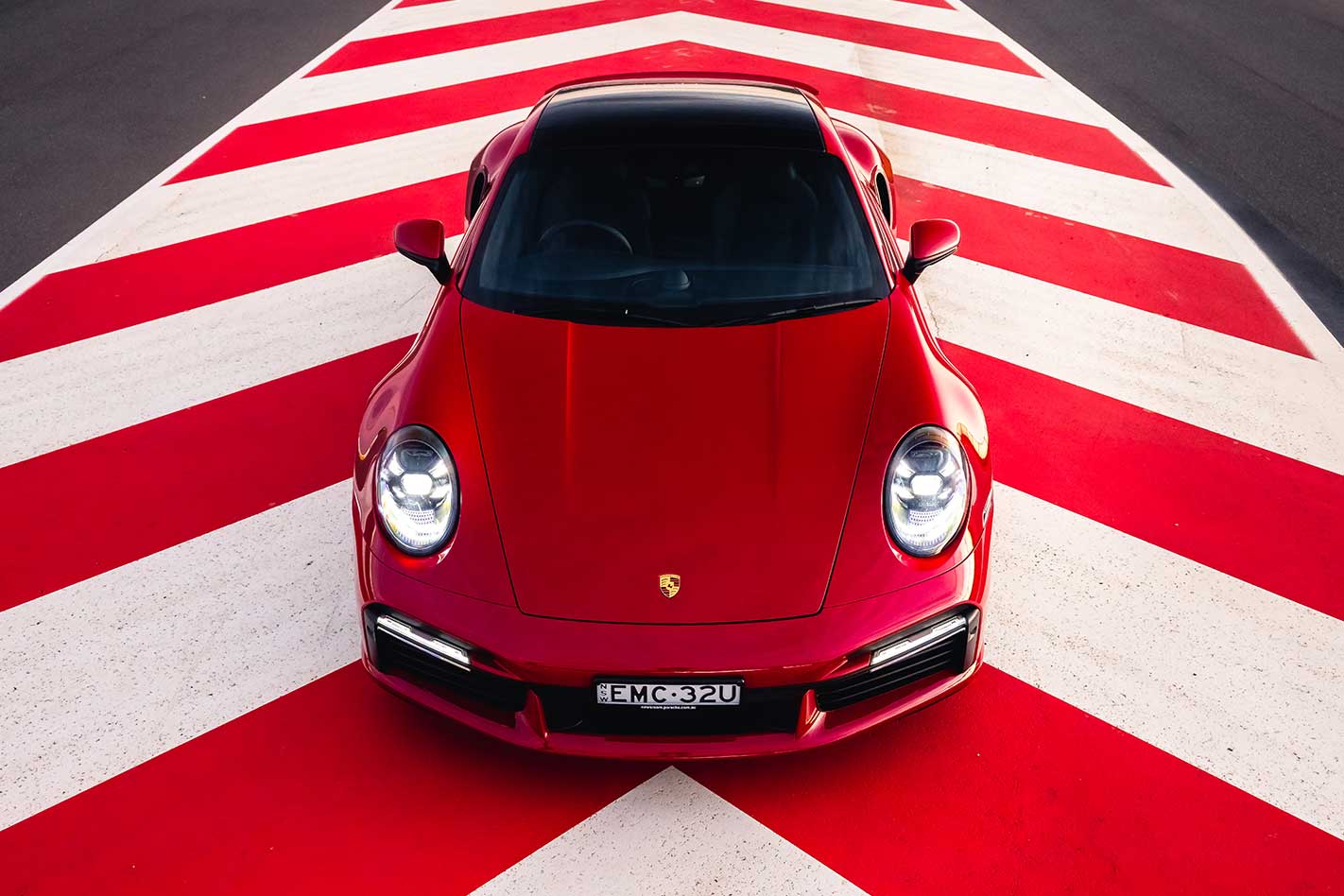
The Taycan counters with a whopping 560kW and 1050Nm from its 93.4kWh battery, though this is only available under launch control conditions. Thus primed, however, Porsche claims you’ll hit 100km/h in 2.8sec and 200km/h in 9.6sec, so this should be quite close.
Under normal circumstances you’re limited to ‘only’ 460kW; the Taycan Turbo S actually uses the same battery and motors as the regular Turbo, the difference being the Turbo S’s aforementioned pulse-controlled inverter with a maximum current of 600 amps, double that of the Turbo.
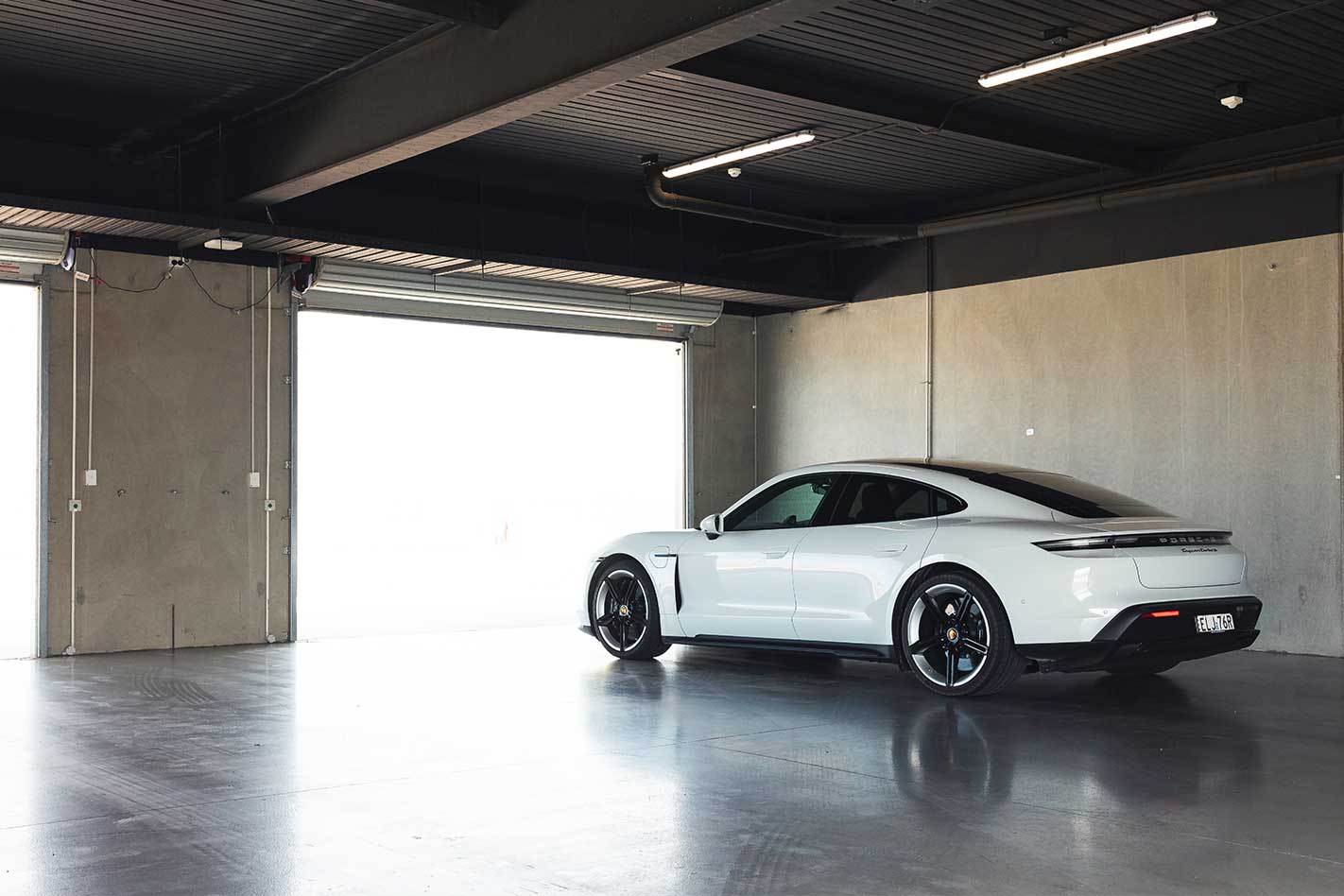
The Taycan is 428mm longer, 66mm wider and 75mm taller than its sportscar sibling, though it has a wider footprint, too, its tracks measuring 1690mm front and 1655mm rear compared to the 911’s 1583/1600mm respectively.
This is despite the 992-series 911 Turbo scoring an extra 45mm of front track along with bigger wheels and tyres. It now wears staggered rims, 20 x 9.0-inch fronts and 21 x 11.5-inch rears, wrapped in tyres measuring 255/35 and 315/30 respectively.

Both cars are all-wheel drive and all-wheel steer, have adaptive dampers, active anti-roll bars (optional in the case of the 911) and multi-link rear ends, though the Taycan uses air springs instead of steel and has a double-wishbone front end in place of the 911’s struts.
A quick word on the brakes, too, if only for the improbable numbers. The 911 Turbo uses monster 408mm steel discs with six-piston calipers at the front and 380mm discs with four-piston callipers at the rear, but the Taycan one-ups this with 420mm carbon-ceramic rotors and 10-piston (!) calipers front, and 410mm carbon-ceramic rotors and four-piston calipers rear.
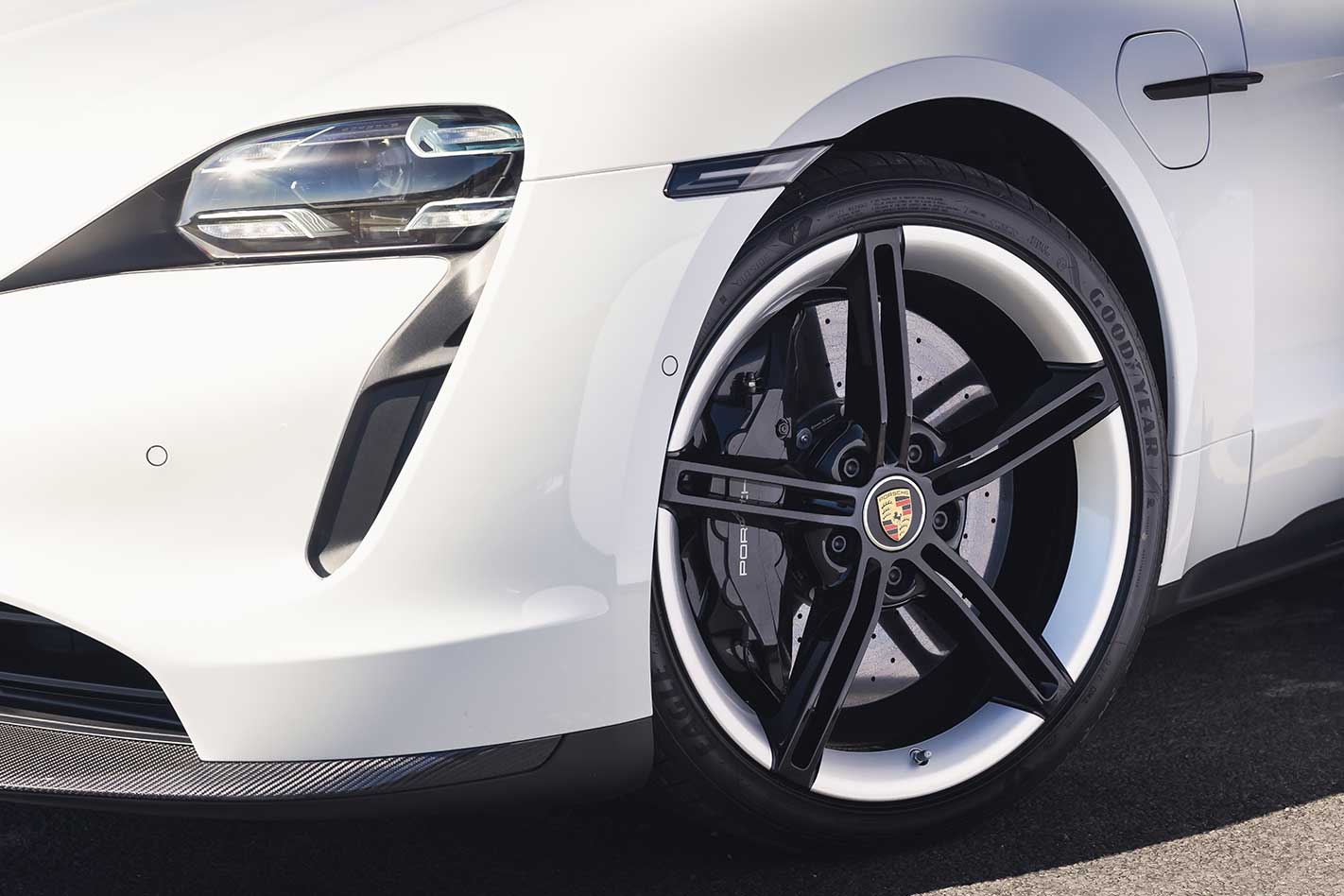
Let’s start once again with the 911 Turbo. The launch control process couldn’t be simpler; irrespective of drive mode or ESP mode or transmission mode, simply press firmly on the brake with your left foot to illuminate ‘HOLD’ on the dash and floor the throttle with your right foot to activate launch control.
The revs flare to just over 5000rpm, the clutches are dropped when you lift your left foot and you’d best be hanging on. All four wheels spin through first gear but second is quickly snatched and each successive ratio is hungrily devoured in turn.
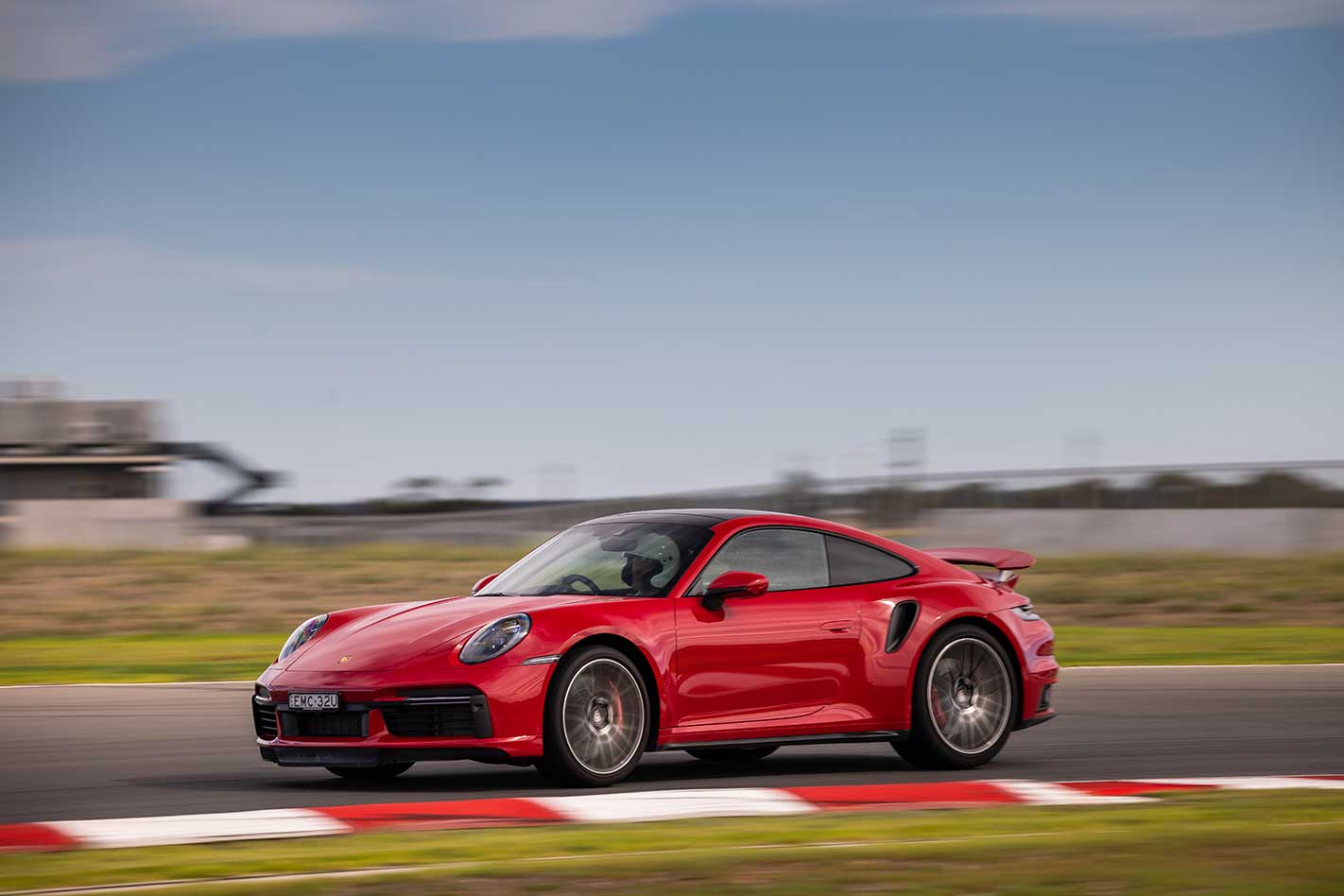
Normal service is resumed on the next run, the 911 hitting 200km/h in 9.252sec, smashing its claim by almost half a second, then recording a 10.545sec quarter mile at 214.3km/h. All three figures are quicker than those we recorded in the previous generation 911 Turbo S.
Activating launch control in the Taycan is an identical process but the experience is very different. The launch, when it comes, is even more shocking for a couple of reasons. To begin with there is next to no sound, just the faint hum of the sound synthesiser; somehow the 911’s rev spike primes your senses for the physical onslaught but there is no such preparation in the Taycan.
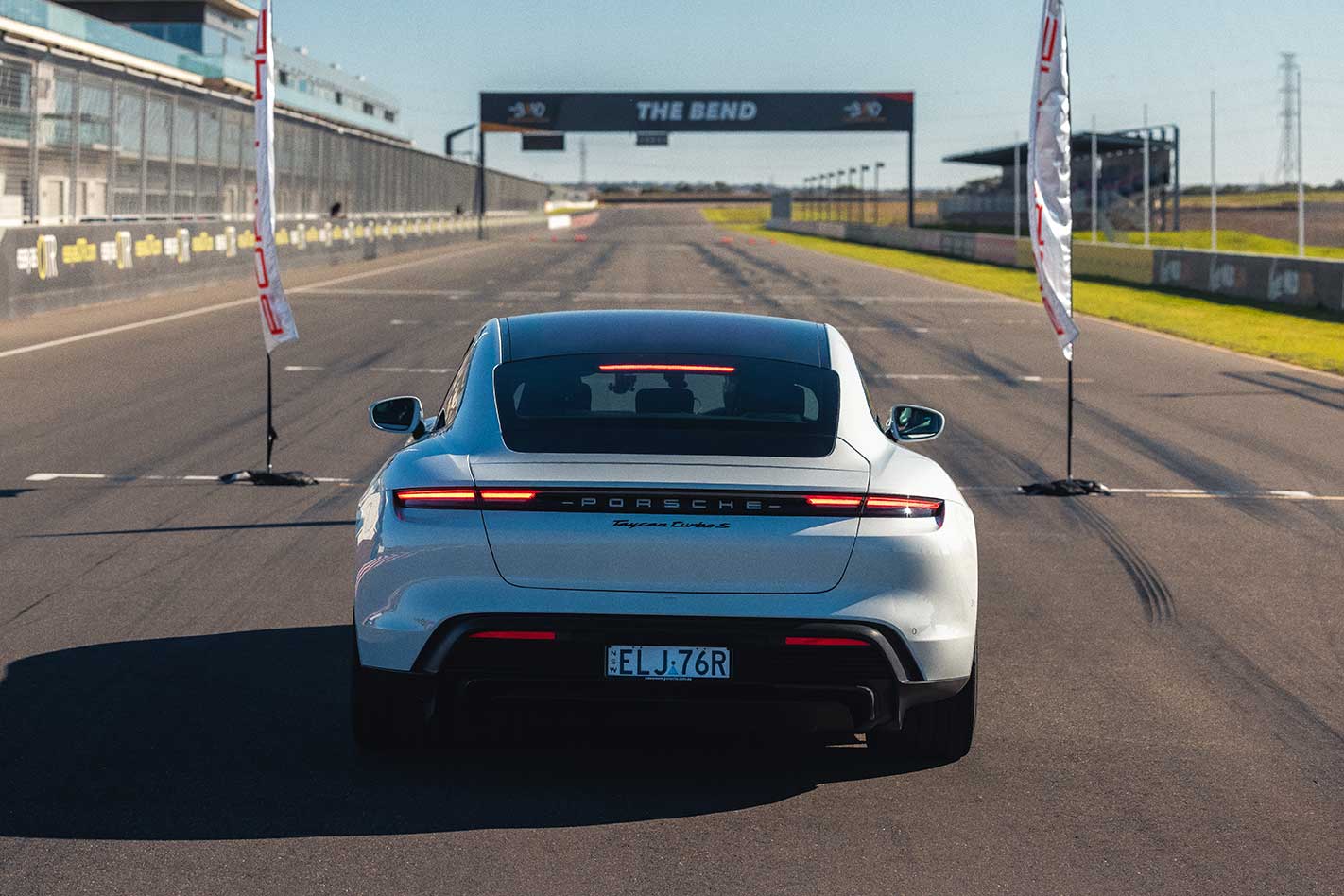
It takes a mere 2.552sec for the Taycan Turbo S to become the quickest accelerating vehicle MOTOR has ever tested, besting the 911 Turbo by a whopping 0.028sec. But as the famous philosopher Dominic Toretto one said, “it doesn’t matter if you win by an inch or a mile, winning’s winning”.
It can go quicker, with the best time we witnessed an amazing 2.46sec, but the process is so automated that the hundredths’ difference is down to software, wind direction and even margin of error in the timing equipment.
The experience is both thrilling and uncomfortable, repeated launches resulting in a queasiness akin to seasickness. You become unpleasantly aware of your internal organs and your eyes feel as though they protrude from your head under the onslaught of longitudinal g-force, but having bolted off the line, the Taycan can’t sustain the charge (pardon the pun).
Regardless, 0-200km/h in 9.658sec and a 10.886sec quarter mile at 211.15km/h is still insanely quick. That an electric Porsche is a sprint star should surprise no one; after all, it’s a discipline that’s perfectly suited to the performance characteristics of battery power.
What does raise eyebrows is the claim the Taycan is not just a true Porsche but a sportscar at that.

In part this is due to the ease of operation: leave the gearbox in auto and it’s flawless in its shift logic; leave the ESP fully on (let alone the more lenient Sport Mode) and it will almost never intervene; you can even drive the 911 Turbo like you would a conventional car and make extremely rapid progress.
Should you put in a bit of effort to adapt your driving to its strengths, however, it’s devastating in its effectiveness. The brakes will literally have your skin hanging from your cheeks as they wash off 180km/h into turn one in the space of 100 metres.
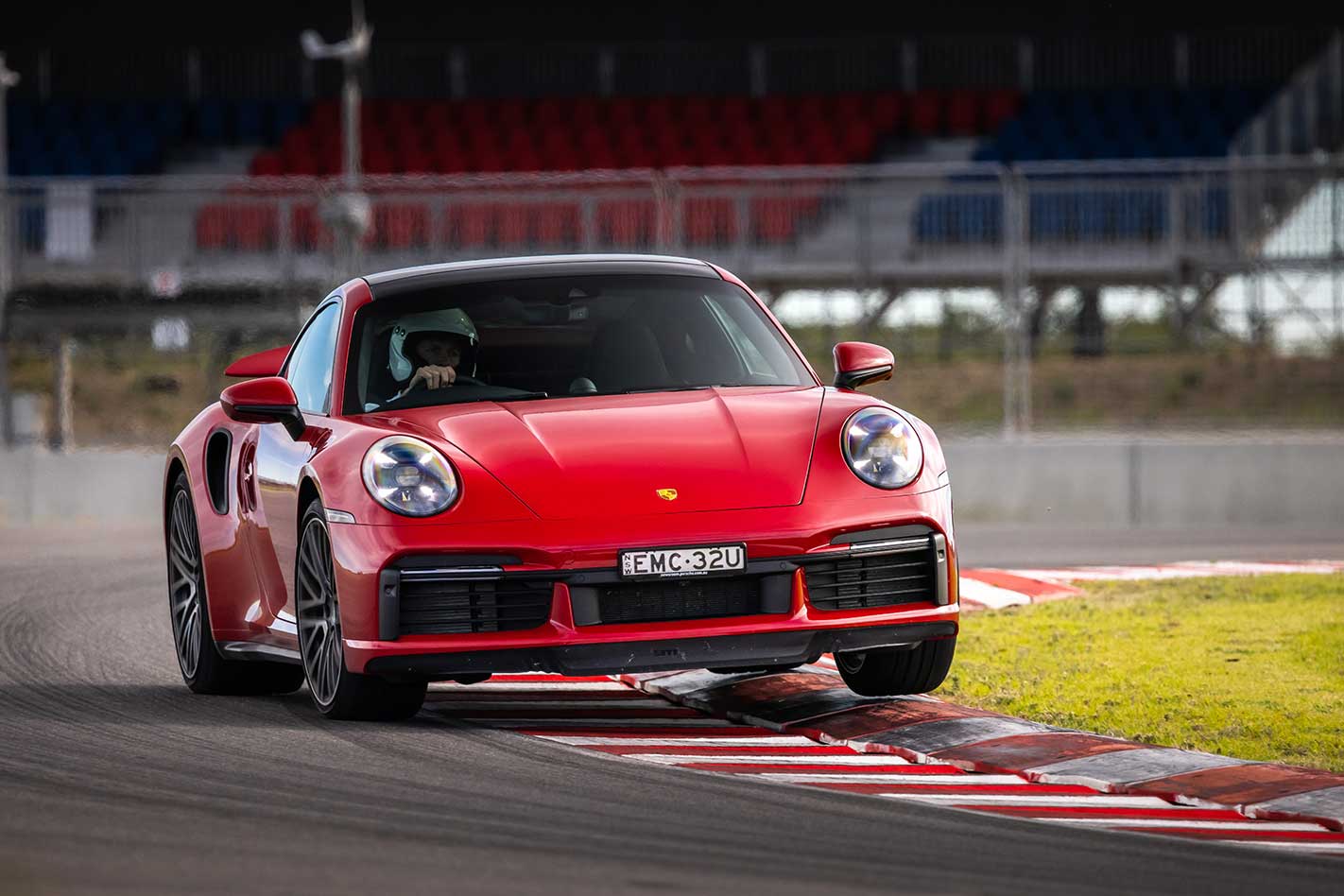
This is why the gearbox is best left in auto; it accelerates so quickly that your chances of perfectly timing the shift before clattering into the rev limiter are slim.
A tight schedule prevented the recording of a representative lap time, but the fact the onboard camera suggests I was lapping in the 1:27sec region while doing in-car pieces for video should give you some idea of the car’s potency. For reference, Rick Kelly managed a 1:27.3sec lap in a Mercedes-AMG GT C during PCOTY 2019 testing.
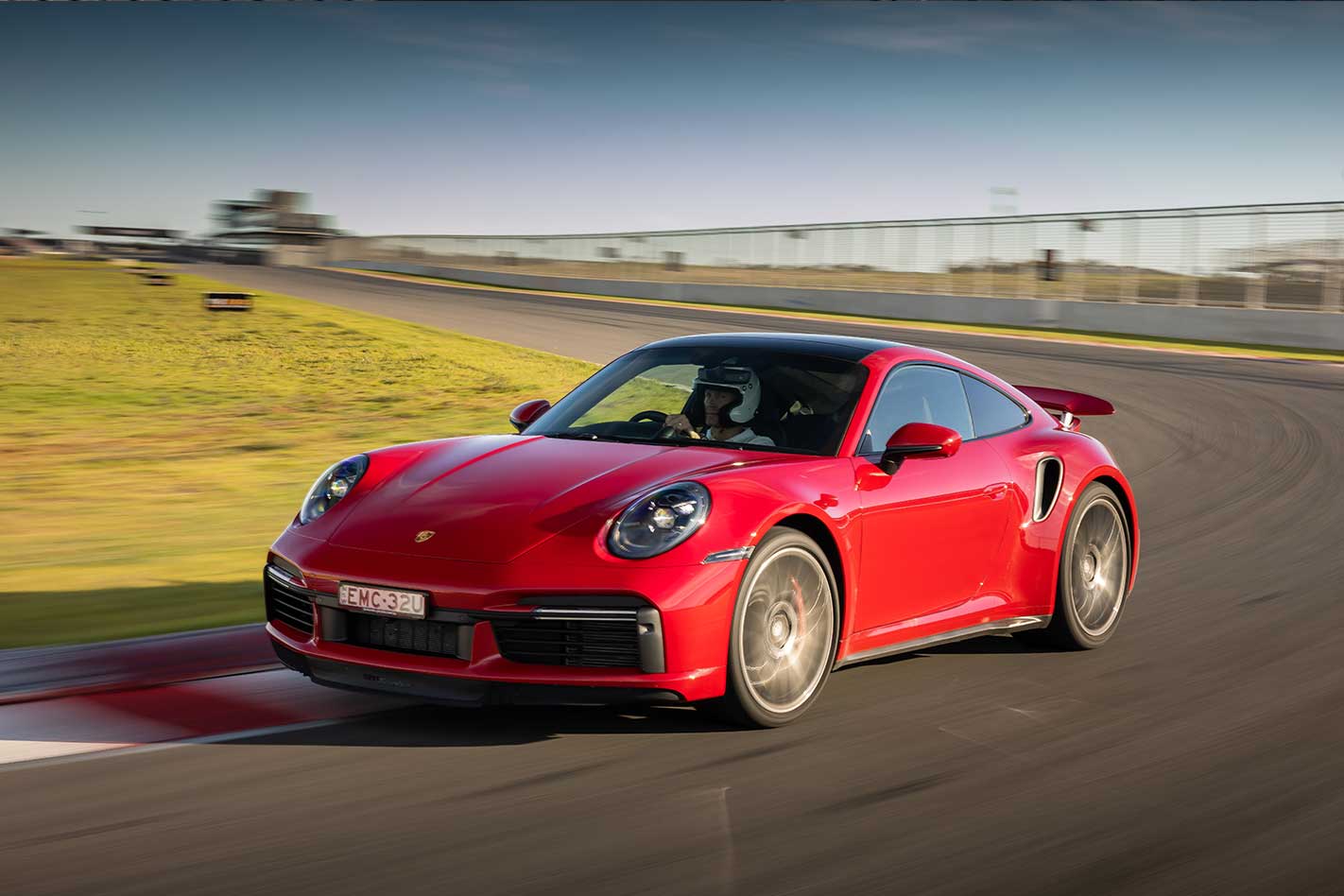
Apart from the driver, the only limiting factor will be its thirst for fuel; after a hard session the fuel reserve light came on with an estimated range-to-empty of 70km despite the 67-litre fuel tank being 6/10ths full. Ouch.
The Taycan Turbo S isn’t as good, it just isn’t, but there should be no shame in a five-door hatch not being as fun or as capable on track as one of the greatest performance coupes ever built, as the Taycan is still darn entertaining.
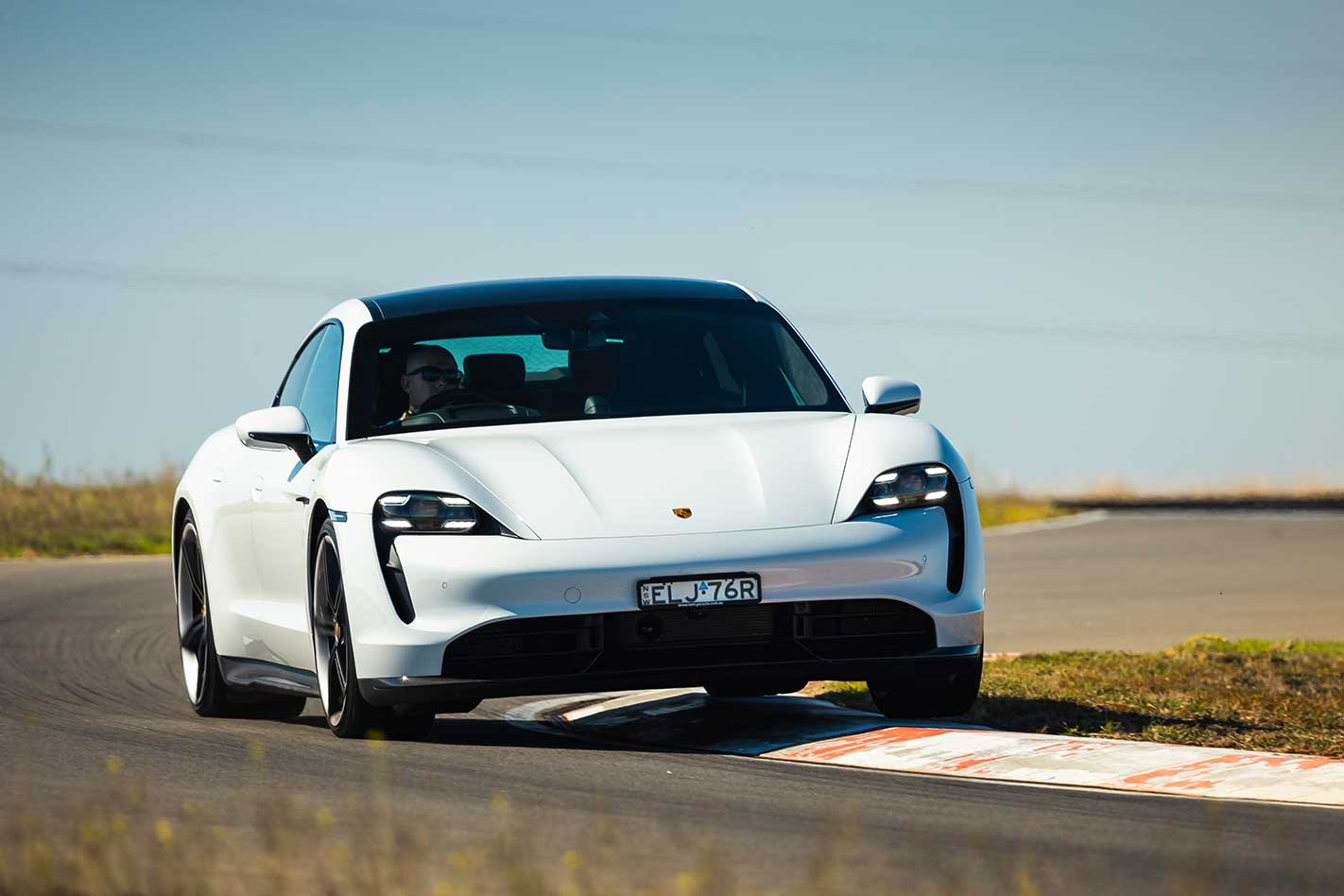
This might seem a weird comparison, but it brings to mind a bigger, heavier Cayman. The steering is lighter than the 911 and the Taycan behaves in a manner that clearly suggests all the mass is located between the axles.
It turns in keenly and will edge into oversteer if you carry too much brake with too much speed; it also doesn’t power understeer like a 911 will in response to lazy and brutal throttle applications; the opposite, in fact, the rear end swinging wide on the exit of slow corners.

Its biggest shortcoming is tyres. There’s absolutely nothing wrong with Michelin Pilot Sport 4 S rubber but it can only do so much to contain the lateral load of 2.3 tonnes, regardless of how low it’s located. A set of Michelin Pilot Sport Cup 2s or Pirelli P Zero Trofeo Rs would do the trick, but there is a point at which the shark is jumped.
The Taycan is actually easier to drive quickly on the track than on the road. On the road the lack of sensory perception makes it difficult to assess how hard to take corners, whereas on a circuit you tend to have reference points: brake here, apex here, look there.
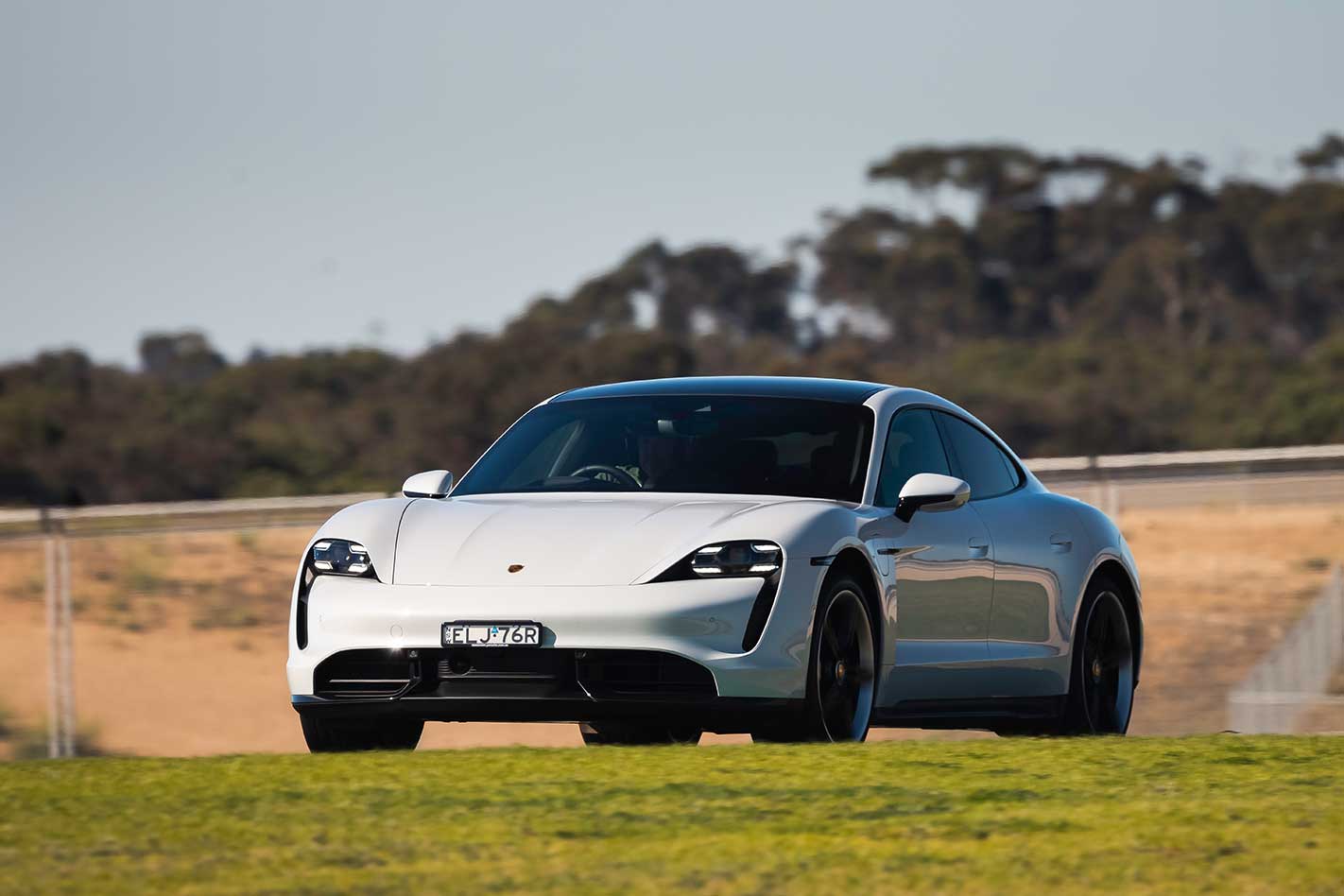
What’s inarguable is that the Taycan Turbo S is a proper Porsche. It has the performance, the stamina – completing five or six flat-out laps in a row before elevated battery temps began to wind back power slightly – and the ‘feel’.
All the control weights will feel immediately familiar to anyone currently in the Porsche family, from the steering to the brakes to the throttle.
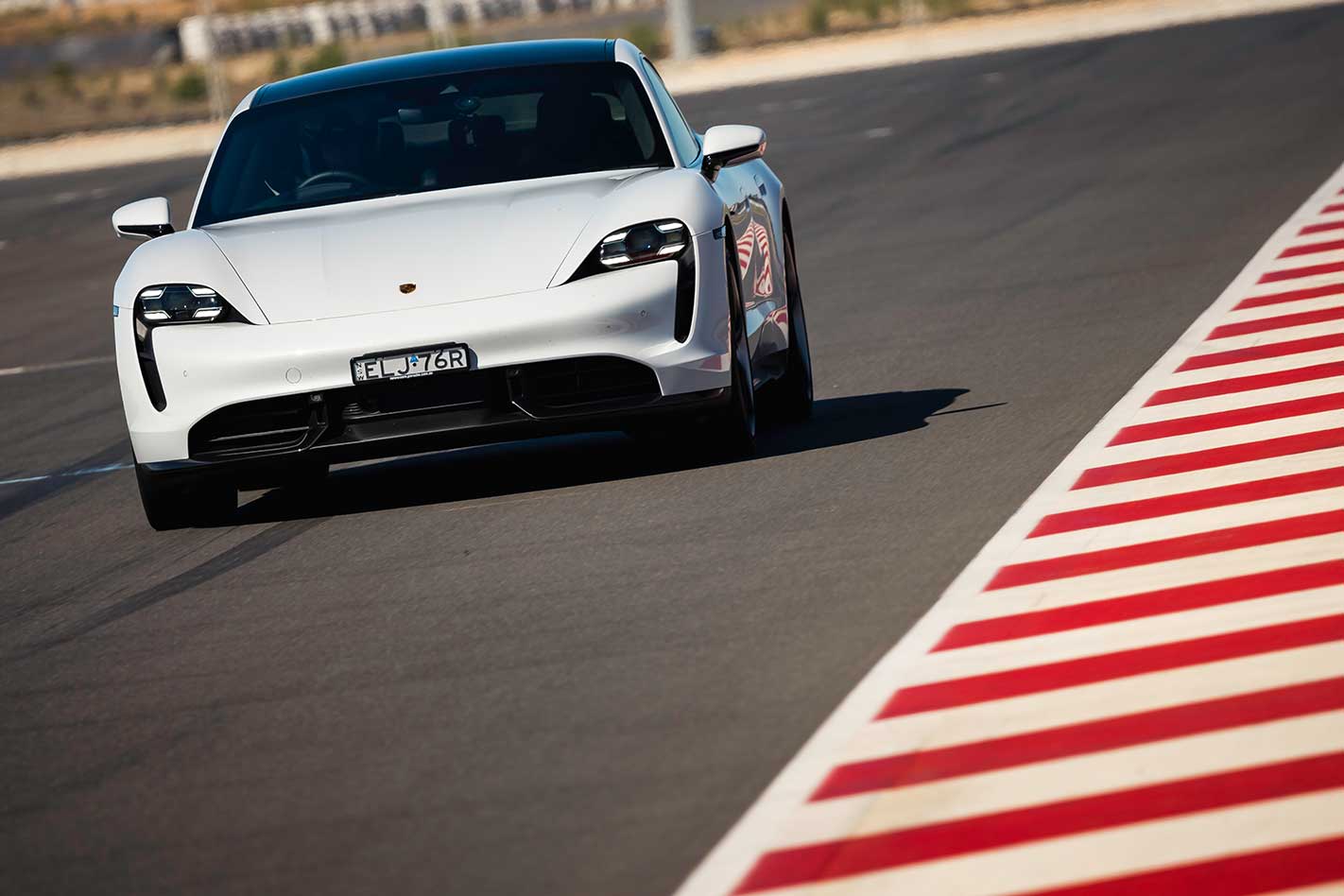
At the risk of sounding like someone from a political PR machine, enthusiasts are the real winners here. On the one hand, we are at the peak of the internal combustion era, with 10sec missiles that are exploitable and enjoyable on road and track.
On the other, cars like the Taycan prove that an electric future needn’t be a boring one; there is still work to do to improve entertainment and interactivity (a gearbox would help massively, even if it makes no sense with an electric motor) but rest assured we’ll still be burning rubber even if we aren’t burning fuel.
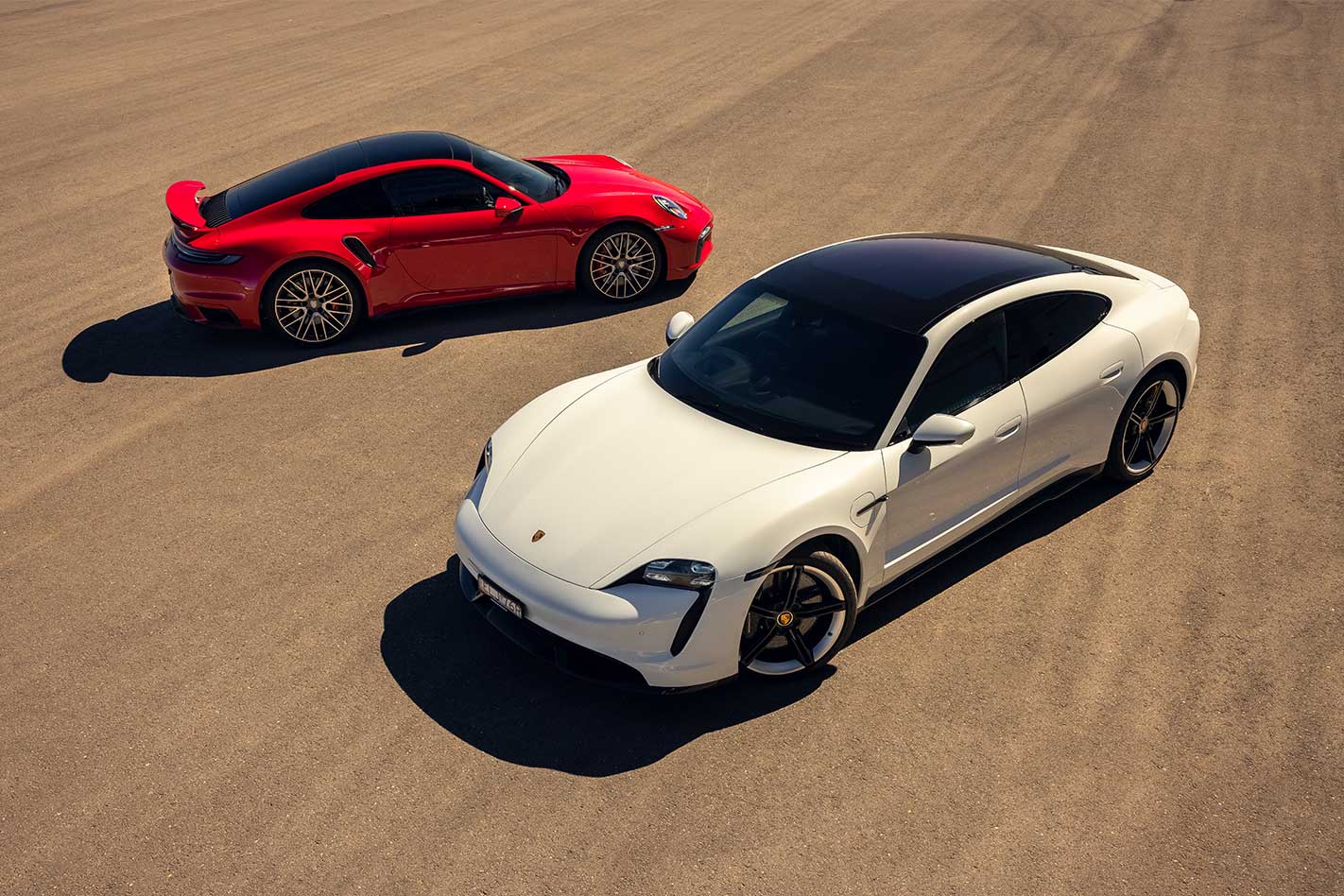
Porsche 911 Turbo – 9.5/10
Likes: ludicrous performance; brilliant driving engagement; stamina
Dislikes: heavy; massive fuel thirst on track; options pricing
Porsche Taycan Turbo S – 9.0/10
Likes: lunatic acceleration; genuinely enjoyable dynamics; future-proof performance
Dislikes: tyres struggle with weight; not as engaging to drive
Specifications
Porsche 911 Turbo
Body: 2-door, 2+2-seat coupe Drive: all-wheel Engine: 3745cc flat-6cyl, DOHC, 24v, twin-turbo Bore/stroke: 102.0 x 76.4mm Compression: 8.7:1 Power: 427kW @ 6500rpm Torque: 750Nm @ 2250-4500rpm 0-100km/h: 2.827sec (tested) 0-200km/h: 9.254sec (tested) 0-400m: 10.545sec @ 214.3km/h (tested) Top Speed: 320km/h (claimed) Weight: 1640kg Power/weight: 260kW/tonne Transmission: 8-speed dual-clutch Suspension: struts, coil springs, adaptive dampers, active anti-roll bar (f); multi-links, steel springs, adaptive dampers, active anti-roll bar (r) L/W/H: 4535/1900/1303mm Wheelbase: 2450mm Tracks: 1583/1600mm (f/r) Steering: electrically assisted rack-and-pinion; rear-wheel steering Brakes: 408mm ventilated/drilled discs, 6-piston calipers (f); 380mm ventilated/drilled discs, 4-piston calipers (r) Wheels: 20 x 9.0-inch (f); 21 x 11.5-inch (r) Tyres: 255/35 ZR20 (f); 315/30 ZR21 (r) Price: $405,000
Porsche Taycan Turbo S
Body: 5-door, 4+1-seat hatch Drive: all-wheel Battery: 93.4kWh (gross) Motor: permanently excited synchronous (f/r) Power: 460kW (560kW overboost) Torque: 1050Nm 0-100km/h: 2.552sec (tested) 0-200km/h: 9.658sec (tested) 0-400m: 10.886sec @ 211.15km/h (tested) Top Speed: 260km/h (claimed) Weight: 2295kg Power/weight: 200kW/tonne (244kW/tonne overboost) Transmission: single-speed (f); 2-speed (r) Suspension: double wishbones, air springs, adaptive dampers, anti-roll bar (f); multi-links, air springs, adaptive dampers, anti-roll bar (r) L/W/H: 4963/1966/1378mm Wheelbase: 2900mm Tracks: 1690/1655mm Steering: electrically assisted rack-and-pinion; rear-wheel steering Brakes: 420mm ventilated/drilled carbon-ceramic discs. 10-piston calipers (f); 410mm ventilated/drilled carbon-ceramic discs, 4-piston calipers (r) Wheels: 21 x 9.5-inch (f); 21 x 11.5-inch (fr) Tyres: 265/35 ZR21 101Y (f); 305/30 ZR21 104Y (r) Price: $338,500


